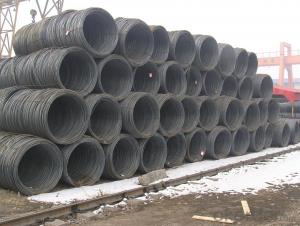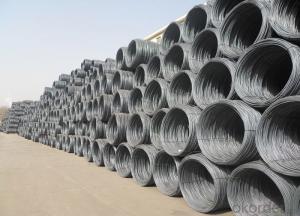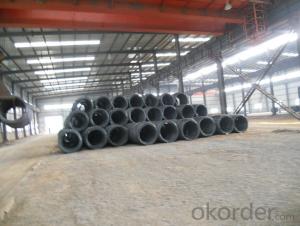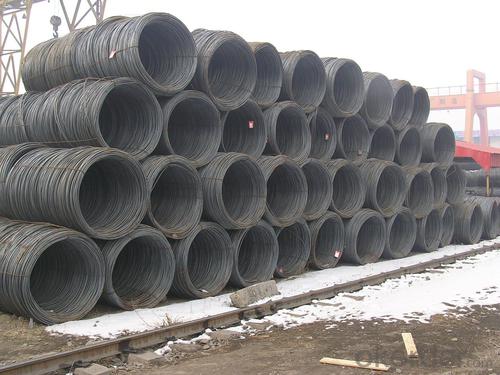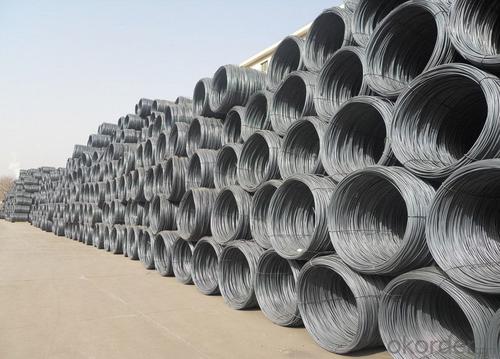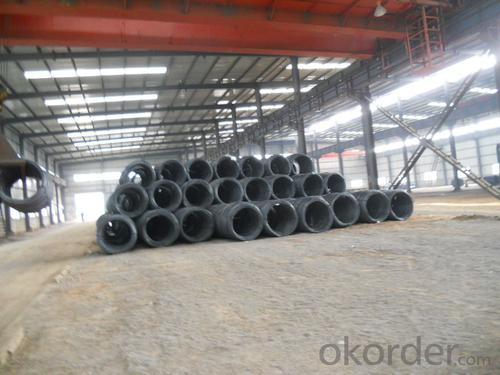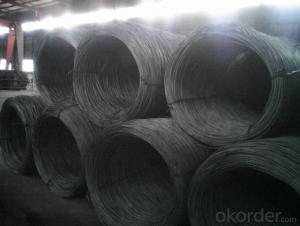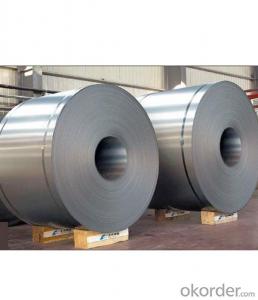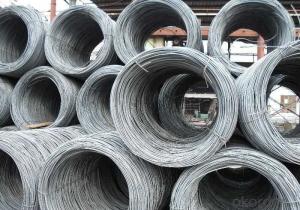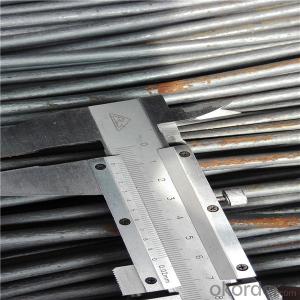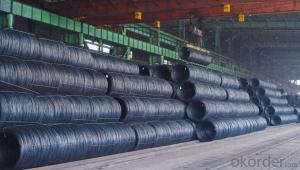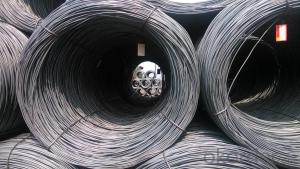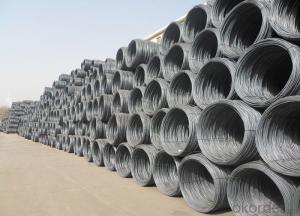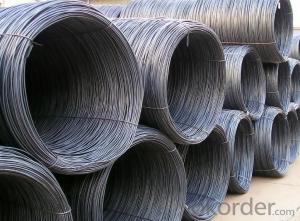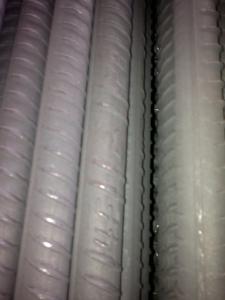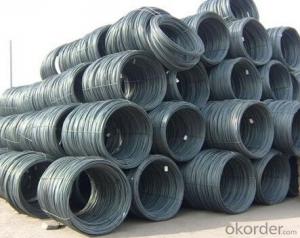Prime Hot Rolled Steel Wire Rod in Coils
- Loading Port:
- China main port
- Payment Terms:
- TT OR LC
- Min Order Qty:
- 100 m.t.
- Supply Capability:
- 10000 m.t./month
OKorder Service Pledge
OKorder Financial Service
You Might Also Like
Specification
Product Description:
OKorder is offering Prime Hot Rolled Steel Wire Rod in Coils at great prices with worldwide shipping. Our supplier is a world-class manufacturer of steel, with our products utilized the world over. OKorder annually supplies products to African, South American and Asian markets. We provide quotations within 24 hours of receiving an inquiry and guarantee competitive prices.
Product Applications:
Prime Hot Rolled Steel Wire Rod in Coils are ideal for structural applications and are widely used in construction and manufacturing. Carbon steel wire rod is mainly used for reinforcement of reinforced concrete and welded structure or reprocessed (roberts , nail, etc.) materials, especially used to produce wire drawing, welding electrode, nails, spring, electronic, precise machinery parts and so on.
Product Advantages:
OKorder's Prime Hot Rolled Steel Wire Rod in Coils are durable, strong, and wide variety of sizes.
Main Product Features:
· Premium quality
· Prompt delivery & seaworthy packing (30 days after receiving deposit)
· Can be recycled and reused
· Mill test certification
· Professional Service
· Competitive pricing
Product Specifications:
Manufacture: Hot rolled
Grade: HRB400,HRB400E,HRB500
Certificates: ISO, SGS, BV, CIQ
Packaging: Export packing, nude packing, in coils, each coil around 2mt
Size: 5.5mm, 6.5mm, 8mm, 10mm
Chemical composition (%): | C | Si | Mn | P | S | Ceq | |||
HRB335 HRBF335 |
0.25 |
0.80 |
1.60 |
0.045 |
0.045 | 0.52 | |||
HRB400 HRBF400 | 0.54 | ||||||||
HRB500 HRBF500 | 0.55 | ||||||||
Mechanical properties | Steel | Rel/ MPa | Rm/ MPa | A/ % | Agt/ % | ||||
≥ | |||||||||
HRB335 HRBF335 | 335 | 455 | 17 |
7.5 | |||||
HRB400 HRBF400 | 400 | 540 | 16 | ||||||
HRB500 HRBF500 | 500 | 630 | 15 | ||||||
FAQ:
Q1: Why buy Materials & Equipment from OKorder.com?
A1: All products offered byOKorder.com are carefully selected from China's most reliable manufacturing enterprises. Through its ISO certifications, OKorder.com adheres to the highest standards and a commitment to supply chain safety and customer satisfaction.
Q2: How do we guarantee the quality of our products?
A2: We have established an advanced quality management system which conducts strict quality tests at every step, from raw materials to the final product. At the same time, we provide extensive follow-up service assurances as required.
Q3: How soon can we receive the product after purchase?
A3: Within three days of placing an order, we will arrange production. The normal sizes with the normal grade can be produced within one month. The specific shipping date is dependent upon international and government factors, the delivery to international main port about 45-60days.
Images:
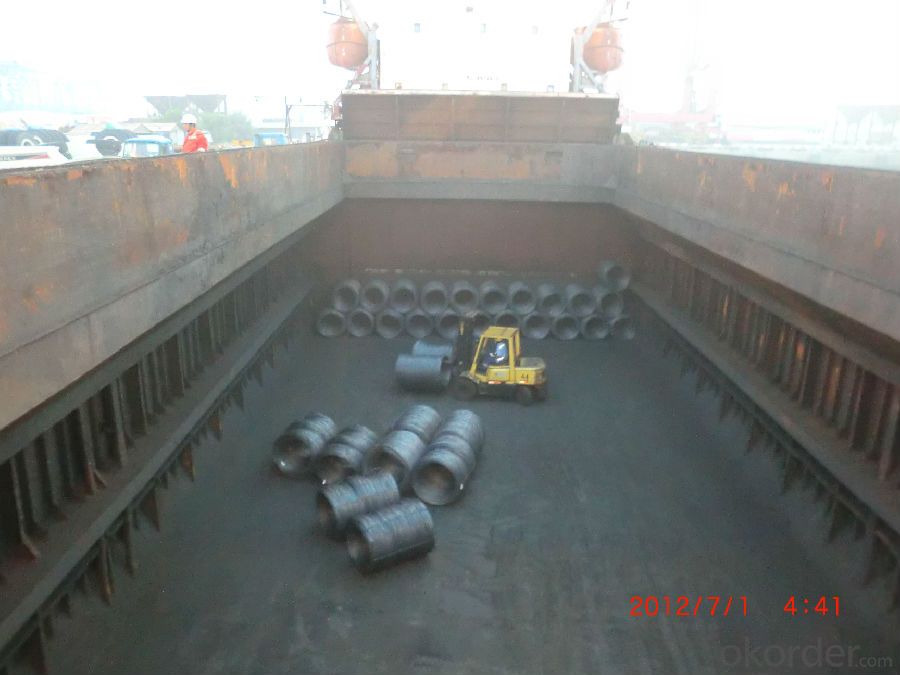
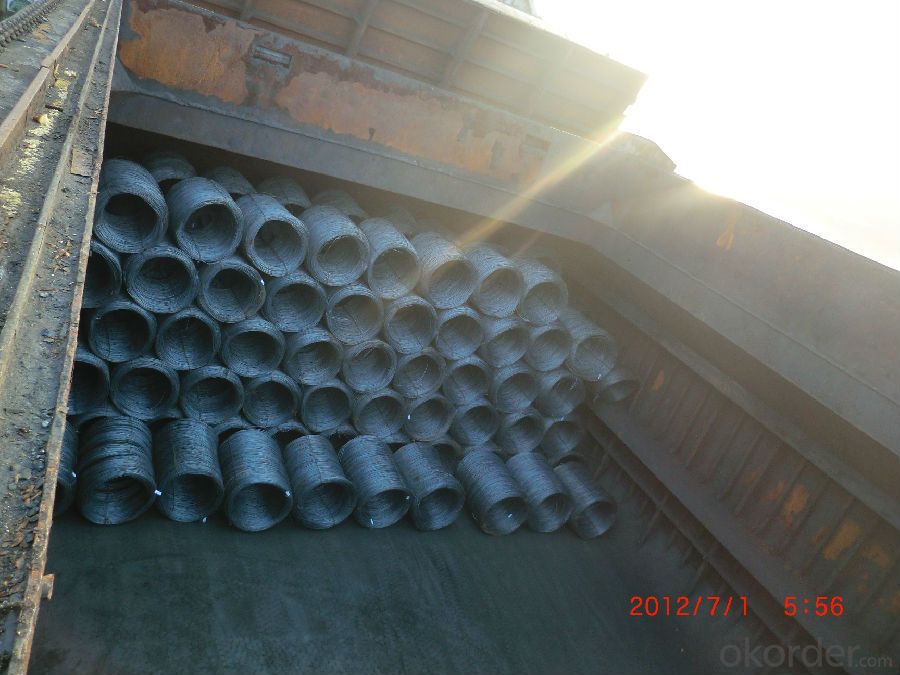
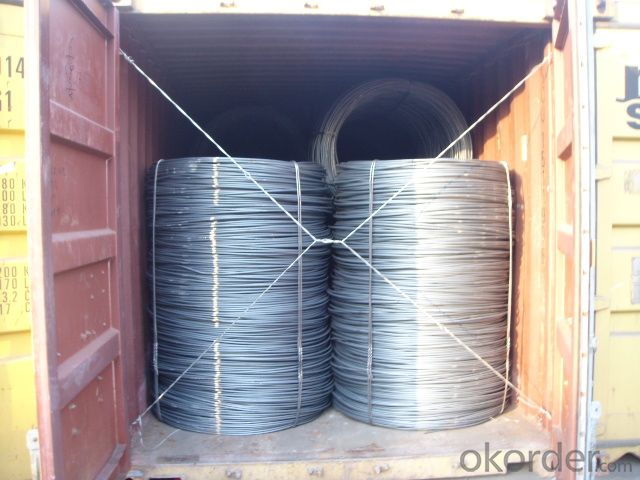
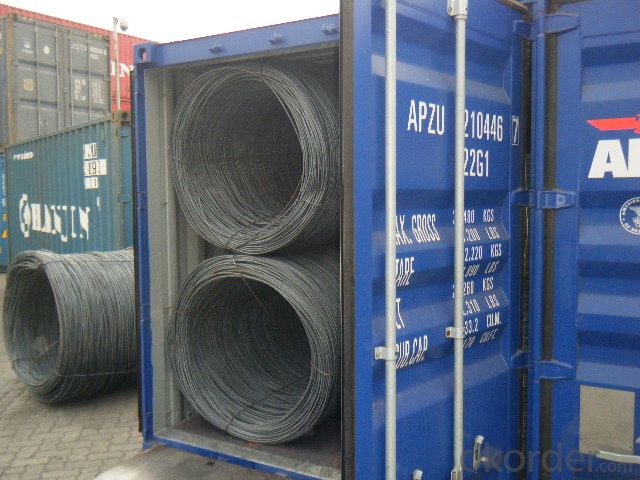
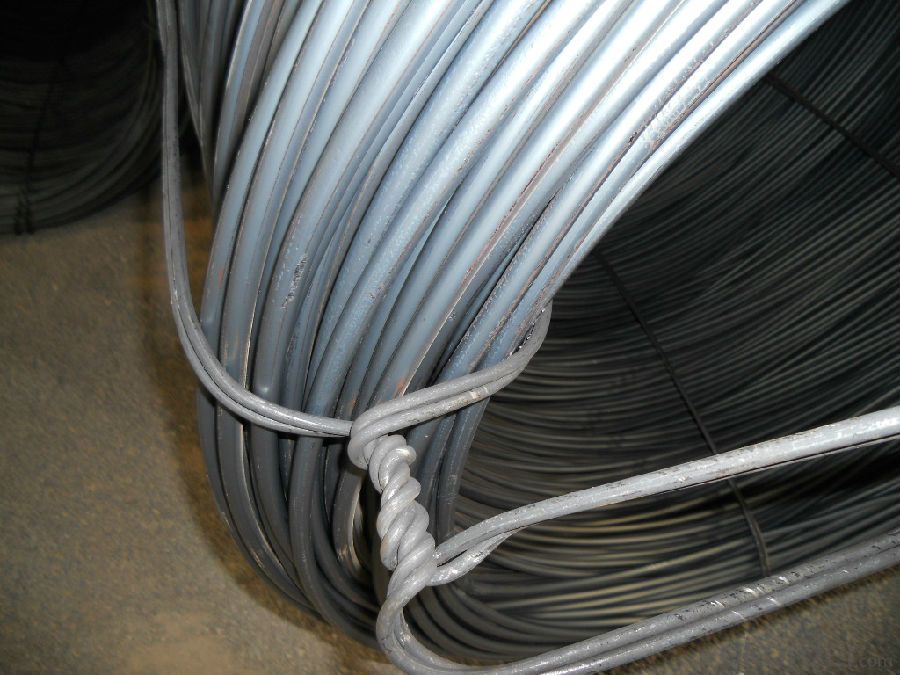
- Q: How are steel wire rods used in the manufacturing of nails?
- When manufacturing nails, steel wire rods play a vital role. These rods, usually made from high-quality steel known for its strength and durability, are crucial components. To begin the process, the appropriate steel wire rod is carefully selected based on the desired nail specifications. The diameter and tensile strength of the rod are chosen with great care to ensure that the final nail meets the required standards. Once the steel wire rods have been chosen, they are introduced into a nail-making machine. This machine is composed of different sections that collaborate to transform the wire rod into a nail. The first section of the machine is responsible for straightening the wire rod, ensuring its correct alignment. Then, the rod is passed to the cutting section, where it is cut into the desired length for the nail. Following that, the rod enters the forming section, where it is shaped into the nail's basic structure. This section employs a combination of mechanical force and heat to mold the wire rod. After the forming process, the nail goes through a series of rollers and dies to refine its shape and enhance its strength. These rollers and dies give the nail its characteristic head, shank, and point. Lastly, the nails are cooled and subjected to quality control inspections. Any defective nails are discarded, while the acceptable ones are collected and packaged for distribution. In conclusion, steel wire rods are indispensable in the manufacturing of nails. They provide the necessary raw material to create sturdy and reliable nails. The strength and durability of steel make it an ideal material for nails, enabling them to withstand the pressures and forces they will encounter during use.
- Q: How is steel wire rod used in the production of wire harnesses?
- Steel wire rod is an essential component in the production of wire harnesses. Wire harnesses are used in various industries, including automotive, aerospace, and electronics, to connect and organize electrical wires and cables. Steel wire rods serve as the base material for manufacturing the wires used in wire harnesses. These rods are typically made from carbon steel and go through a series of processes to transform them into wires of various thicknesses and diameters. The wire rods are first cleaned and coated with a lubricant to enhance their durability and flexibility. Once the wire rods are prepared, they are drawn through a series of dies to reduce their diameter and increase their length. This drawing process helps in aligning the steel molecules, making the wires stronger and more uniform. The drawn wires are then annealed to relieve internal stresses and further enhance their ductility. The resulting steel wires, which are now smooth and uniform, are then used in the production of wire harnesses. These wires are cut to the required lengths and stripped at specific points to expose the conductive metal. The stripped ends are then soldered or crimped to connectors, terminals, or other electrical components. The wires are then bundled together using various techniques, such as braiding, taping, or plastic molding, to form the final wire harness. Steel wire rods play a crucial role in the production of wire harnesses as they provide the necessary strength and conductivity required for efficient electrical connections. The quality and properties of the steel wire rod directly impact the performance and reliability of the wire harnesses, making it essential to use high-quality materials in their production.
- Q: How is steel wire rod tested for ultimate tensile strength?
- Steel wire rod is tested for ultimate tensile strength through a destructive testing process known as a tensile test. In this test, a sample of the wire rod is subjected to increasing tensile force until it fractures. The force applied and the elongation of the wire rod are measured throughout the test. By determining the maximum force the wire rod can withstand before breaking, its ultimate tensile strength can be accurately determined.
- Q: How is steel wire rod used in the manufacturing of bicycle spokes?
- Steel wire rod is used in the manufacturing of bicycle spokes as it provides the necessary strength and durability. The wire rod is first drawn into the desired diameter and then cut into appropriate lengths to form spokes. These spokes are then threaded or bent to fit into the hub and rim of the bicycle wheel, providing stability and support. The high tensile strength of steel wire rod ensures that the spokes can withstand the pressure and load placed on them while riding, making them an essential component in bicycle manufacturing.
- Q: How is the mechanical strength of steel wire rod assessed?
- The mechanical strength of steel wire rod is typically assessed through various tests such as tensile testing, hardness testing, and impact testing. These tests help determine the wire rod's ability to withstand pulling forces, resist deformation, and absorb energy upon impact, respectively. Additionally, other factors such as yield strength, ultimate tensile strength, and elongation are also considered in assessing the mechanical strength of steel wire rod.
- Q: How is steel wire rod used in the manufacturing of wire decking?
- Steel wire rod is an essential component used in the manufacturing of wire decking. It serves as the primary material from which the wire mesh or grid pattern of the decking is created. By carefully bending and welding the steel wire rod, manufacturers can produce the strong and durable wire decking that is commonly used in storage racks, shelving systems, and mezzanines. The wire rod's high tensile strength and flexibility make it suitable for supporting heavy loads and providing effective storage solutions in various industries.
- Q: What are the environmental benefits of recycling steel wire rod?
- There are several environmental benefits of recycling steel wire rod. First and foremost, recycling steel wire rod helps to conserve natural resources. By recycling steel, we can reduce the need for extracting and mining iron ore, which is the primary raw material used in steel production. This reduces the environmental impact of mining activities, including deforestation, habitat destruction, and soil erosion. Additionally, recycling steel wire rod helps to reduce energy consumption and greenhouse gas emissions. Producing steel from recycled materials requires significantly less energy compared to producing steel from virgin materials. The recycling process also emits fewer greenhouse gases, such as carbon dioxide, compared to the production of steel from scratch. By recycling steel wire rod, we can contribute to mitigating climate change and reducing our carbon footprint. Furthermore, recycling steel wire rod helps to reduce waste and landfill space. Steel is a durable material that can be recycled indefinitely without losing its properties. By recycling steel wire rod, we can divert this material from ending up in landfills, where it would take up valuable space and contribute to pollution. Recycling steel wire rod also reduces the need for new steel production, which can result in waste generation and environmental pollution during the manufacturing process. Lastly, recycling steel wire rod helps to protect ecosystems and wildlife. Mining activities for iron ore extraction can have devastating effects on ecosystems, including the destruction of forests, contamination of water sources, and disruption of wildlife habitats. By reducing the demand for new steel production through recycling, we can minimize the negative impacts on ecosystems and preserve biodiversity. In conclusion, recycling steel wire rod offers numerous environmental benefits, including the conservation of natural resources, reduction in energy consumption and greenhouse gas emissions, waste reduction, and protection of ecosystems and wildlife. By choosing to recycle steel wire rod, we can contribute to a more sustainable and environmentally friendly future.
- Q: What are the main factors influencing the choice of steel wire rod warranty?
- The main factors influencing the choice of steel wire rod warranty are the quality of the steel wire rod, the reputation of the manufacturer, and the terms and conditions of the warranty itself. Firstly, the quality of the steel wire rod plays a significant role in the choice of warranty. Buyers would prefer a higher quality product that is less likely to have defects or issues, thus reducing the need for warranty claims. The overall strength, durability, and performance of the steel wire rod are crucial factors in determining the level of confidence in the product and, subsequently, the warranty. Secondly, the reputation of the manufacturer also influences the choice of warranty. A manufacturer with a proven track record of producing high-quality steel wire rods and providing reliable warranties is more likely to instill trust in the buyer. Positive reviews, testimonials, and references from other customers can contribute to the decision-making process, as they provide insights into the manufacturer's commitment to customer satisfaction and after-sales service. Lastly, the terms and conditions of the warranty itself are an essential factor. Buyers consider factors such as the duration of the warranty, the coverage it provides, and any limitations or exclusions mentioned in the warranty documentation. A longer warranty period and comprehensive coverage, including protection against manufacturing defects or premature failure, are often preferred. Additionally, factors like the process for filing warranty claims, the responsiveness of the manufacturer's customer service, and the ease of warranty fulfillment are also taken into account. In summary, the main factors influencing the choice of steel wire rod warranty include the quality of the product, the reputation of the manufacturer, and the terms and conditions of the warranty. Buyers prioritize a high-quality product, a reputable manufacturer, and a warranty with favorable terms and comprehensive coverage.
- Q: How is steel wire rod used in the manufacturing of wire forms for safety barriers?
- Steel wire rod is an essential component in the manufacturing of wire forms for safety barriers. The process starts with the selection of high-quality steel wire rod, which is typically made from carbon or alloy steel. This wire rod is then subjected to several manufacturing processes to create wire forms that are strong, durable, and capable of providing the necessary safety features. The first step in the manufacturing process is the drawing of the wire rod. This involves pulling the wire rod through a series of dies to reduce its diameter and increase its length. Drawing is important to ensure that the wire forms have a consistent diameter and smooth surface finish. Once the wire rod is drawn, it is then cut into the desired length for the wire forms. These lengths are typically determined based on the specific requirements of the safety barriers. The cut wire rod is then formed into the desired shape using various techniques such as bending, twisting, or welding. After the wire rod is shaped into the appropriate form, it is often coated or treated to enhance its performance and durability. For example, a galvanized coating can be applied to protect the wire form from corrosion and increase its lifespan. Additionally, the wire forms may undergo heat treatment processes to improve their mechanical properties, such as strength and hardness. The wire forms manufactured from steel wire rod are then assembled into safety barriers. These barriers are used to prevent accidents, control traffic, and provide security in various applications such as highways, construction sites, and industrial facilities. The strength and durability of the wire forms ensure that the safety barriers can withstand impact and provide effective protection. In summary, steel wire rod plays a crucial role in the manufacturing of wire forms for safety barriers. It provides the necessary strength, durability, and stability required for these barriers to effectively protect people and property. The wire rod undergoes various manufacturing processes to create wire forms that are capable of withstanding impact and providing long-lasting performance.
- Q: How does the yield strength of steel wire rod vary with different heat treatment processes?
- The yield strength of steel wire rod can vary significantly with different heat treatment processes. Heat treatment processes such as annealing, quenching, and tempering can affect the microstructure and mechanical properties of the steel wire rod. Annealing, for example, involves heating the wire rod to a specific temperature and then slowly cooling it, which can result in a softening of the material and a lower yield strength. On the other hand, quenching involves rapidly cooling the wire rod, which can result in a hardened material with a higher yield strength. Tempering, a process that follows quenching, can further modify the yield strength by reducing brittleness and increasing toughness. In summary, the specific heat treatment process used on steel wire rod can have a significant impact on its yield strength, ultimately determining the mechanical properties of the material.
Send your message to us
Prime Hot Rolled Steel Wire Rod in Coils
- Loading Port:
- China main port
- Payment Terms:
- TT OR LC
- Min Order Qty:
- 100 m.t.
- Supply Capability:
- 10000 m.t./month
OKorder Service Pledge
OKorder Financial Service
Similar products
Hot products
Hot Searches
Related keywords
